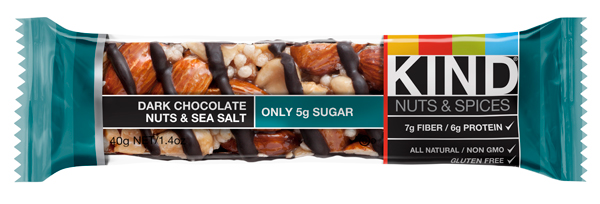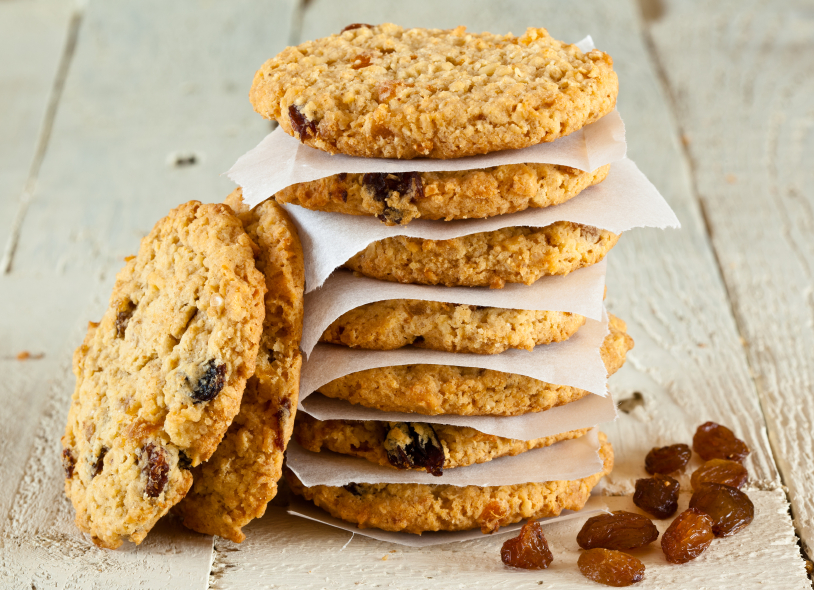Picture this: the doors have slid open, the gust of cold air hits us, and now we’re faced with the 45,000 products the average supermarket carries. Aside from feeling purely overwhelmed at deciding what and how to choose what goes into our carts, along with our rushed, over-scheduled lives, we seem to spend more time thinking about what goes ON our bodies (like clothes and shoes) than what goes IN them.
So many food labels are difficult to decode – perhaps the reason why 60-70 percent of what we purchase is unplanned. We often fall prey to items that wear descriptive names, like “natural” and “wholesome” and “organic”…these words are like magnets attracting us to their otherwise less attractive products. Studies have shown that when a food is deemed superior through a name, it is more likely that people would expect the food to be beneficial to their health. Trans-fat free fries, baked chips, and organic candies are all surrounded by health halos, yet some halos are far from angelic.
But you shouldn’t have to be a mathematician, a librarian, or a dietitian to buy the right foods. The food label should be like the table of contents of a book – it should tell us what’s inside. Unfortunately, misleading labels lurk throughout the store and I’m here today to give you the inside scoop on what’s really going on between the lines. Here are a few examples of some personal favorite ‘wall of shame’ claims where food companies are selling sound bites instead of sound advice.
“Light”
Most often this term means the item has a third fewer calories than its full-calorie equivalent, as with light bread. But don’t assume that “light” means low in calories. The term “light” is also used to describe such properties as texture and color, as long as the label explains the intent. For example, “light brown sugar” and “light and fluffy.” “Light” could also represent that a product’s sodium content has been reduced by at least 50 percent, as with soy sauce, where the light version has about half (but still a lot) of the sodium of comparable soy sauce. “Light” olive oil, however, contains the same calories and fat as regular olive oil – it just has a lighter-tasting flavor and a lighter color, but it’s still 2,000 calories per cup!
Tip: Choose a real thick, dark, rich, heavy olive oil; it’ll taste better, you’ll use less and therefore, end up with less calories.
“Sugar-Free and Fat-Free”
Here’s where “free” can be costly! Many consumers connect sugar- and fat-free with calorie free, yet many of these seemingly unrestricted foods can be just as high in calories as their regular counterparts. Sugar-free foods typically use artificial sweeteners and sugar alcohols that could lead to gas, bloat and diarrhea instead of a lower number on the scale. Moreover, sugar-free could be high in fat and fat-free can be high in sugar.
Tip: Especially when choosing snacks, choose products with ingredients you can recognize. A combo of protein, carbs, and fats will provide the most satisfaction. As an example, when you look at a KIND Nuts & Spices Bar, you can actually see what’s in it with an ingredient list you can pronounce. You’ll find around five grams of sugar on the label derived mostly from honey, with no artificial sugars. In general, always check ingredients lists to see where your fats and sugars are coming from.
“Wheat Bread”
Even if a bread label shows a picture of a stalk of wheat swaying in the wind, it’s not necessarily carrying the benefits of whole grains. Any flour that comes from wheat can be called “wheat flour” even though it may be processed, bleached, and stripped of important nutrients. The bread’s dark color could be a result of added molasses or caramel coloring; it doesn’t mean this product will be bursting with fiber or whole grain goodness.
Tip: Choose a product that has the words “whole grain” or “100% whole wheat” mentioned first on the ingredient list to be sure you’re getting the nutrient-rich carbohydrate you’re paying for.
“0g Trans Fat”
Here’s where ‘0’ may not mean zero. Food manufacturers are allowed to round down and label any product that has less than a half gram of trans fat per serving as “0 g trans fats.” That means you could be getting 0.49 grams of trans fat in a single serving and not know it. Does 0.49 = 0? Not exactly. This may not seem like a big deal, but if you couple this with impractical serving sizes, the likelihood is that you could consume a lot more trans fat than you bargained for.
Tip: If you notice 0 grams of trans fat and the serving size is unrealistically small (like one cookie), and the product contains partially hydrogenated or hydrogenated fat…step away from that box and go find a better one.
The bottom line is that, albeit somewhat flawed, the nutrition label is a powerful tool that should be there to guide consumers – not trick them. No matter what, you still need to read it before you eat it – especially on April 11th, National Read Your Nutrition Labels Day. Show your support at your local supermarket (and bring your reading glasses!).
Also Read:
7 Whole Grains You Should be Eating
Read It Before You Eat It Helps You Decode Food Nutrition Labels
Your Red Snapper is Mislabeled as Mercury-Filled Tile Fish
 Author Bonnie Taub-Dix, MA, RDN, CDN provided this article on behalf of KIND Snacks, and gives guidance without gimmicks and she makes sense of science. She is owner of BTD Nutrition Consultants, LLC, with offices on Long Island and in New York City. In this role for more than thirty years, Bonnie counsels individuals and groups and she is an advisor to major corporations, food companies, and fitness clubs, creating wellness programs, working on promotional campaigns, conducting seminars, and providing media and social media interviews. She conducted thousands of interviews for all forms of media including television and radio shows and print and web sources and is currently blogging for US News & World Report. Bonnie’s book, Read It Before You Eat It, translates confusing and misleading terminology into consumer-friendly information. Her website is BetterThanDieting.com and you can find her on Twitter @eatsmartbd.
Author Bonnie Taub-Dix, MA, RDN, CDN provided this article on behalf of KIND Snacks, and gives guidance without gimmicks and she makes sense of science. She is owner of BTD Nutrition Consultants, LLC, with offices on Long Island and in New York City. In this role for more than thirty years, Bonnie counsels individuals and groups and she is an advisor to major corporations, food companies, and fitness clubs, creating wellness programs, working on promotional campaigns, conducting seminars, and providing media and social media interviews. She conducted thousands of interviews for all forms of media including television and radio shows and print and web sources and is currently blogging for US News & World Report. Bonnie’s book, Read It Before You Eat It, translates confusing and misleading terminology into consumer-friendly information. Her website is BetterThanDieting.com and you can find her on Twitter @eatsmartbd.





